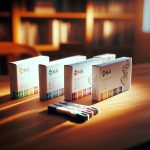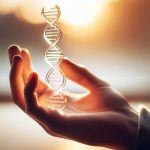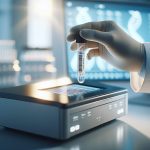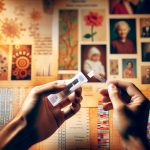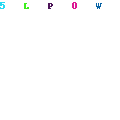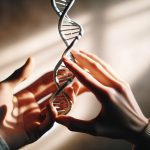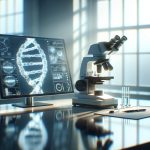LifeScanner, a cutting-edge app designed for iOS devices, is revolutionizing the way we interact with nature. This innovative tool employs DNA barcoding technology, enabling users to uncover the vast array of life forms that surround us. It’s not just about identifying species; it’s about opening up a world where everyone, regardless of their scientific background, can engage with and understand the complexity and beauty of biodiversity.
At its core, LifeScanner aims to democratize access to scientific knowledge. You don’t need a PhD to use it, just curiosity and a smartphone. By simplifying complex data into user-friendly information, it empowers individuals to learn about their environment in an entirely new way. Whether you’re in your backyard or on an adventure in distant lands, discovering what lives there has never been easier or more exciting.
The brain behind this revolutionary project is Sujeevan Ratnasingham. As both founder and CEO of LifeScanner, he brings passion and vision to the table. His goal? To make learning about biodiversity accessible for all and foster a deeper connection between people and the planet. In doing so, Ratnasingham hopes not only to enlighten but also inspire action towards preserving our world’s precious diversity.
Looking ahead, the future seems bright for LifeScanner. With plans for expansion and continued innovation, this platform stands at the forefront of environmental education. It’s more than just an app; it’s a gateway to understanding our place within the natural world and how we can protect it for generations to come.
Starting with an introduction to you and your profession
Holding dual roles, I am both at the helm of informatics within the Center for Biodiversity Genomics and lend my expertise as an Adjunct Professor at the University of Guelph. My entrepreneurial spirit led me to establish LifeScanner, where I serve as CEO. Initially forged in the realm of computer science, a pivotal encounter with Paul Hebert—a distinguished faculty member at the University of Guelph—steered my career towards biology in 2000. This meeting was not just a turning point but a gateway into the fascinating world of DNA sequencing and molecular biology.
My work has been deeply intertwined with DNA Barcoding since then, marking a groundbreaking approach to species identification through genomic snippets. This innovative method does more than name unknown species; it lays bare their ecological relationships. Such insights have fueled BioScan, our ambitious endeavor aimed at sketching detailed maps of ecosystem interactions via DNA data.
Despite its scientific prowess, this technology remained largely untapped outside academic circles until 2013 when I collaborated with SAP to launch LifeScanner to bridge this gap. Designed for non-specialists, LifeScanner simplifies field sample collection: users gather samples in vials, record them using our app, and send them off for analysis. The results are swiftly relayed back via mobile alerts detailing the identified species.
By 2015, it was evident that there was significant demand for such services. This led me to fully spin off LifeScanner into an independent entity by 2017, making it broadly accessible across various sectors including food validation and forensic science. In essence, LifeScanner is demystifying species identification and bringing vital biological insights right into people’s hands.
Exploring Various Applications of LifeScanner
LifeScanner kits have become a pivotal tool in uncovering fraudulent practices within the seafood industry, thanks to collaborations with organizations such as the David Suzuki Foundation and SeaChoice. Through extensive surveys across Canada, these kits have helped identify numerous instances of mislabeling, thereby safeguarding consumer trust. Furthermore, businesses leverage these kits to verify the authenticity of their grocery offerings, thus cementing a bond of confidence with their clientele.
An innovative application was observed when San Diego integrated these kits into an educational initiative by distributing them across public libraries. This not only facilitated an interactive learning experience about local biodiversity but also led to the discovery of new species within the city limits. Such initiatives exemplify how blending technology with education can yield significant scientific contributions while fostering a deeper connection with nature among community members.
Moreover, the utilization of LifeScanner in law enforcement has marked a turning point in combating wildlife crimes. By aiding agencies like the South African Police and Department of Environmental Affairs in identifying poached goods through DNA testing—a method tough and costly for criminals to manipulate—the kits serve as an invaluable asset in regulatory frameworks.
A noteworthy use case is addressing bird strikes in aviation by analyzing remains to inform preventive strategies based on migratory patterns. This not only enhances safety protocols but also underlines LifeScanner’s versatility beyond its conventional applications.
Lastly, on a more personal note, utilizing LifeScanner for pest management presents an environmentally friendly alternative. Instead of resorting to indiscriminate pesticide use potentially harmful to all garden inhabitants, precise identification allows for targeted interventions that are both effective and considerate towards biodiversity preservation.
How do you use the information gathered from your app, and what goals do you have?
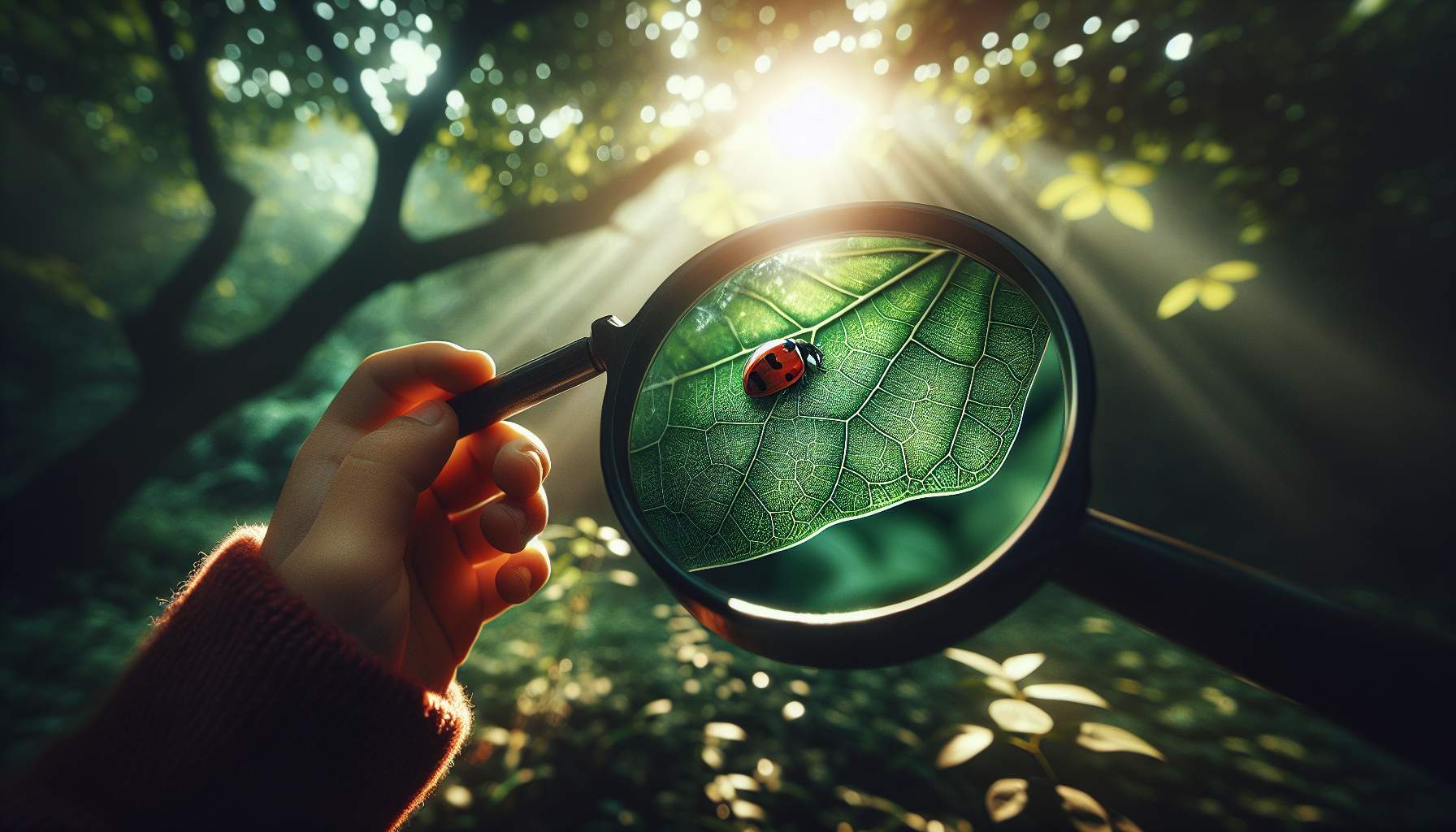
Collecting and identifying biodiversity data is crucial for enhancing our collective understanding of the natural world. This information, especially DNA details and geographic specifics about where species are found, becomes invaluable to scientists globally. For instance, discovering species in unusual places, like my own urban backyard, raises red flags. Sometimes these findings include invasive pests not native to the area—like the emerald ash borer—which can cause significant ecological and economic damage.
An intriguing example involves an individual who ordered roasted pistachios online and discovered a cooked worm inside. Upon investigation, it was identified as a moth previously unrelated to pistachios—a clear sign of an invasive species making its way into new territories, likely propelled by climate change.
When such discoveries are made, informing relevant forestry agencies or other management bodies is often the next step to help mitigate potential damage. In Canada alone, invasive species like the emerald ash borer have cost billions in damages and continue to pose threats.
Beyond pests and trees, people also use biodiversity data for personal reasons such as identifying unknown insect bites. However, this type of sensitive information isn’t shared publicly. In contrast, broader data that could benefit community knowledge or scientific research is made freely available.
Partnerships with educational organizations like the Captain Planet Foundation and Let’s Talk Science highlight another aspect of how this data serves society by enabling kids to engage with DNA analysis firsthand. Such initiatives demystify science for young learners and encourage hands-on exploration.
In terms of food safety testing—an ever-important concern—efforts are made not to single out specific restaurants or grocery stores negatively but rather focus on improving industry standards overall. For instance, our recent collaboration with a seafood provider aims at preemptively identifying problems before products reach Canadian markets—a proactive stance towards food safety that benefits everyone involved.
This approach embodies a belief in empowering individuals through access to important data so they can address issues directly while fostering more accountability within supply chains everywhere. With tools now available for verifying product origins and quality, there’s hope that more businesses will begin validating their supplies more rigorously. Ultimately,
- this empowers consumers,
- makes markets more transparent,
- and contributes positively towards environmental stewardship.
The role of biodiversity data thus spans from advancing scientific understanding to ensuring everyday consumer well-being—it’s all connected in our global ecosystem.
This narrative illustrates just how intertwined we are with nature’s complexity—and why every discovery matters.
Unveiling Food Deception with LifeScanner
Trust issues in the food industry primarily stem from mislabeling and fraud. This gradually erodes confidence within the entire supply chain, creating a significant problem that worsens over time. It’s crucial to understand that pointing fingers solely at retailers isn’t fair since accountability spreads across every stage of the supply chain.
In comes LifeScanner, a game-changer offering solutions at various points along this chain. Its most notable feature is its ability to empower both retailers and consumers with testing capabilities. Retailers can now verify their products before sale, and importantly, consumers can also conduct these tests personally. This mutual verification process ushers in a new era of transparency and trust.
What sets LifeScanner apart is its capacity for direct consumer involvement in product testing—offering what might be considered the ultimate seal of approval. This level of openness doesn’t need to be frequent or prolonged; even occasional adoption by supply chains could significantly reduce incidents of fraud and mislabeling.
However, given that any marketplace is susceptible to dishonest shortcuts, minimal levels of testing are essential. Despite slow regulatory responses plagued by insufficient funding and staffing, there’s room for private sector initiatives like LifeScanner to bolster trust and transparency.
Ultimately, leveraging technologies such as LifeScanner aligns with broader aims to enhance integrity within food distribution networks—a cause well worth pursuing for all involved stakeholders.
What current trends or technologies catch your attention?
The shrinking of genomic technology stands out as a fascinating development in the scientific community. The urgency brought on by the COVID-19 pandemic has accelerated innovation, leading to smaller and more efficient lab equipment. This progress means we’re moving towards a future where laboratory capabilities can fit into something as small as a handheld device. Such advancements promise to slash costs and enable rapid genetic testing anywhere, at any time.
Growing up with Star Trek introduced many from my generation to the tricorder – a device that symbolizes breaking down barriers to information through immediate access. This idea isn’t just science fiction anymore; it’s becoming our reality, much like how Google revolutionized information retrieval or GPS transformed navigation. Soon, we’ll have tools at our fingertips that could analyze biological data on the fly, significantly enhancing our interaction with the world around us.
Our planet is teeming with life that remains largely unexplored due to informational gaps and accessibility issues. The COVID pandemic exemplifies this disconnect, revealing how diseases can emerge from insufficient understanding of biodiversity. However, with these emerging technologies, we stand on the brink of an era where such challenges could be tackled more effectively than ever before.
While it’s hard to predict exactly how these tools will evolve or their impact on society, one thing is clear: they are poised to change the world fundamentally.
